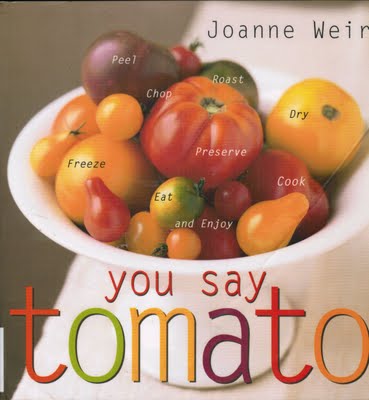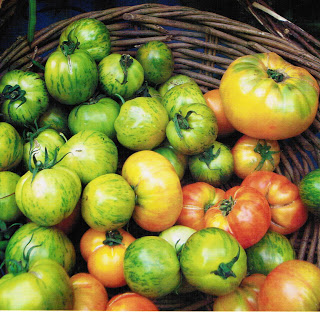My husband and I just bought over fifty tomato plants this past weekend, which means I had to go find some of my tomato cookbooks and start searching for what I want to make this summer. There is nothing like a home grown tomato. The ones in grocery stores don’t even come close to being a fresh garden tomato. The grocery store tomatoes are usually picked green and stored, sometimes for weeks in refrigerated storage, then are blasted with ethylene gas which is the natural ripening gas in tomatoes, to redden them for the store. They may be red, but they certainly aren’t ripe. If you don’t have a garden, a Farmer’s Market is the next best place. In addition to all of the culinary attributes of tomatoes, they are also low in calories, half the daily needed supply of vitamin C is in one single tomato, the antioxidant lycopene, and vitamin A and potassium are all found in tomatoes. I think tomatoes are the most anticipated vegetable of the summer. No matter where you live, the tomato and all its beauty and uses are welcomed with enthusiasm.
Botanically, a tomato is a fruit, but legally in America it is considered a vegetable. The ancestor of our garden tomato started more like a cherry tomato, growing wild in the Andes region of Peru and the coastal highlands of western South America hundreds of years ago. After Cortes led the Spanish Conquest in 1519, they introduced the tomato throughout their empire. The tomatoes continued their migration and adapted to the Mediterranean climates of Spain, southern France and Italy. In our country, the tomato was profiled when Thomas Jefferson grew tomatoes at Monticello. By 1870, factories in eastern Pennsylvania and New Jersey were processing thousands of acres of tomatoes, making them one of the top three canned vegetables of the time.
I have quite a few tomato cookbooks, but this one is probably my favorite. It’s not only great recipes, but there are addresses for seed sources, instructions on planting and growing, and a listing of tomato varieties to decide what you want to plant for your needs. The recipes are near perfect starting out with the basics like sauces and soups, and then moves on to savory pies, pizzas, flatbreads, pasta, breads, eggs, condiments, meats, seafood, and poultry, and even a few desserts. One of my favorite dishes to make and freeze is marinara sauce to last us through the winter. It’s so comforting to pull out the sauce when it’s minus 20 degrees, cook up some pasta, and have a plate of summer.










No comments yet.